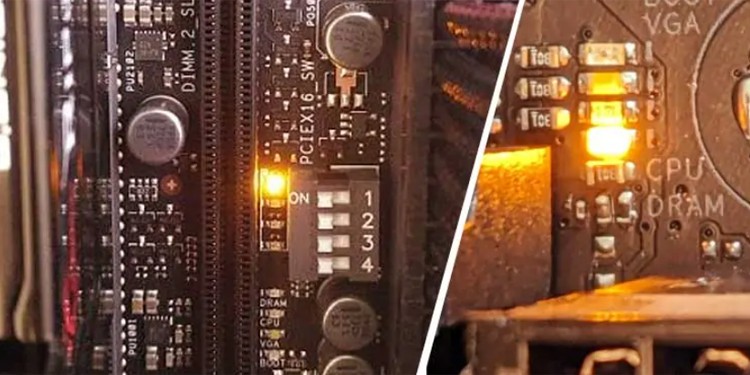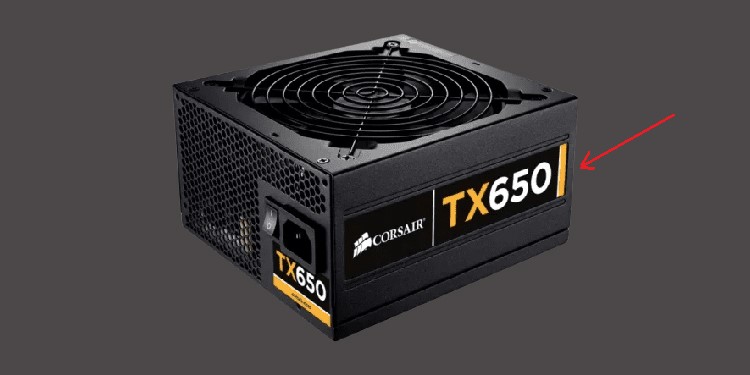Therefore, users need to perform a thorough review before concluding that a motherboard is dead. So, we have brought forth this article to help you differentiate a dead motherboard from something else.
Signs of a Failing Motherboard
A failing motherboard will give you some warning, and the components connected to it will also begin to fail. So, let us begin with signs of a failing motherboard. If your PC suffers from any of the mentioned issues, there is a high probability that the motherboard is dead or is on the verge of it.
Almost regular occurrence of the BSOD (Blue Screen of Death) The system restarts automatically. The motherboard speaker beeps error code constantly The overall decrease in your computer’s performance The system monitors high temperatures even when idle The motherboard has trouble detecting its internal components (CPU, RAM, HHD or SSD, etc.)
These are all possible signs that you have a failing motherboard. However, this may not always mean your motherboard is dying. Sometimes, simple bugs may be causing these issues. Nevertheless, if your computer starts to show this behavior, it is usually best to fix these issues before they cause any damage to the computer.
How to Tell If a Motherboard is Dead?
Follow the steps in the order they are listed. However, keep in mind that with each step you take, the likelihood of your motherboard failing increases.
Check for any Physical Damages
The first thing we can do to tell if a motherboard is dead is to check for physical damage. Physical damages to the motherboard include its header, DIMM slots, or CPU sockets. Check if these slots and pins are loose or bent. Depending on the severity of the damage, we can try fixing it in a local repair shop. However, if there are any visible cracks on the motherboard, there is no possible way to fix it, and your motherboard will render useless. Some other physical damages on the motherboard that we can check are explained below.
Bulged Capacitors
Capacitors are the tall cylindrical parts on the motherboards that handle power spikes. If some components are supplied with high power, these capacitors absorb it and protect the motherboard from damage. A bulged capacitor indicates that it is no longer functional. As a result, your components will be vulnerable to voltage spikes.
Burned Spot on Motherboard
Another visual damage sign on your motherboard is a burnt spot. If there are any burns on your motherboard, it most likely means that there was a short circuit when the computer was turned on. When any electrical system short circuits, it immediately stops functioning. This holds true for the motherboard as well. If there are any burnt spots on your motherboard, it is most likely dead.
Check for Error Indication
If we cannot find any physical damage to the motherboard, check if the motherboard gives some error message. Usually, when a motherboard does not turn on, it will either light up an LED light or sound beep codes to indicate something is wrong. These LED lights getting lit means that it is having issues with the graphics card, CPU, power supply, or physical memory. Similarly, if a speaker is connected to the motherboard‘s front panel connectors, it will beep error codes when the motherboard encounters an error. So, if your motherboard does not respond or give any LED light error or error beep codes, there is a high chance that you have a dead motherboard. However, there are cases like faulty PSU that make it seem like your motherboard is dead. If your motherboard gives you an error code or some LED light error, then the issue you have is not with a dead motherboard. Analyze these error codes to fix the problem.
Examine the PSU
Another reason a motherboard may seem like a dead one is because of insufficient Power Supply from PSU or an uncertified one. All your components connected to the motherboard require some amount of power. If the PSU fails to deliver sufficient power to this motherboard, it will stop functioning and make it seem like we have a dead motherboard. Therefore, ensure that the power supply is adequate for all your system components. Newegg and Coolermaster have a great section on their websites to determine the total power supply. If your PSU supplies low power, then the recommended number from these sites is ideal for replacing it. Similarly, if a PSU is not certified, it can also cause issues that can seem like the motherboard is dead. Therefore, before considering that the motherboard is dead, replace the PSU with a certified one. A power supply must be at least 80 Plus Bronze certified. If you have a PSU that is certified and supplies enough power to the system, and it still does not turn on, try disconnecting parts that are not required during boot.
Disconnect Everything
Some internal components can take an unusual amount of power that may stop a motherboard from booting. Removing this component such as hard disk, SSD, or even the USB will give the motherboard enough power to turn on. If the motherboard turns on, the issue is most likely with the parts that you just disconnected.
Swap Components
One of the last tasks we can perform to determine if a motherboard is dead is swapping the hardware component. In some cases, when we have a faulty part, such as RAM and the CPU, the motherboard may even cease to function. So, we can try swapping these components one at a time to determine the part that may create a dead motherboard. Swapping major components, such as the CPU processor and RAM or using one RAM stick at a time, can help us pinpoint the issue.
Finally,
Unfortunately, the motherboard is most likely dead if you have performed every mentioned step and you still cannot turn on or make the motherboard respond. However, if you’ve bought the motherboard and it is DOA (Dead on Arrival), the motherboard manufacturer will refund or may even send you a different board.




